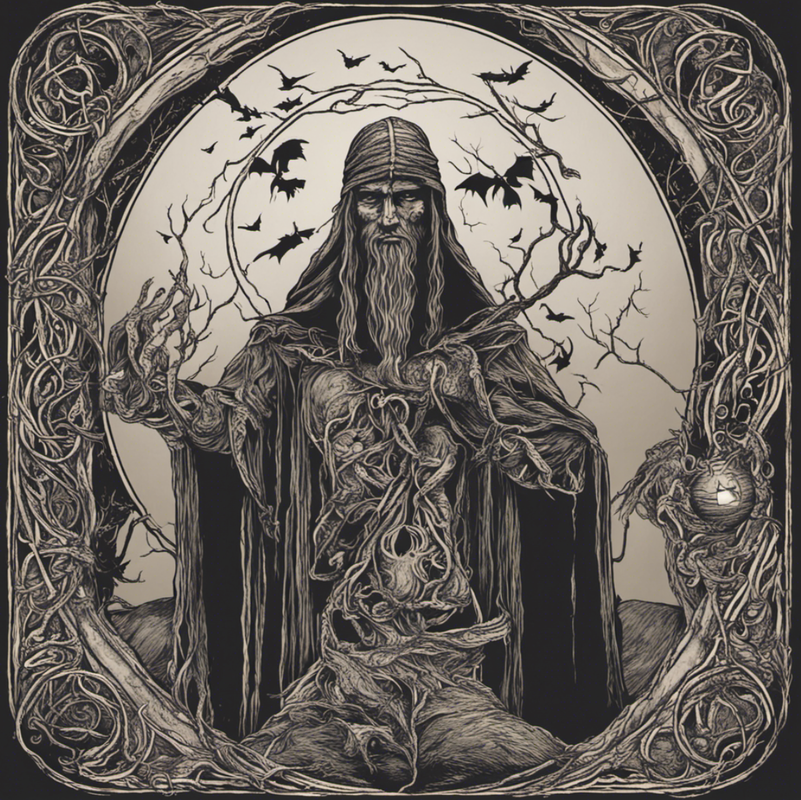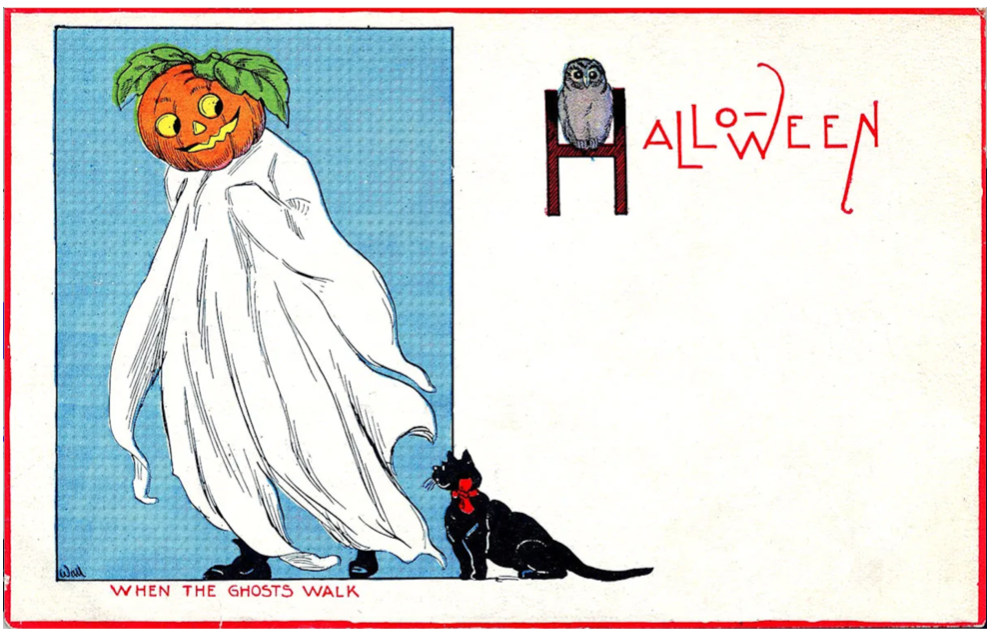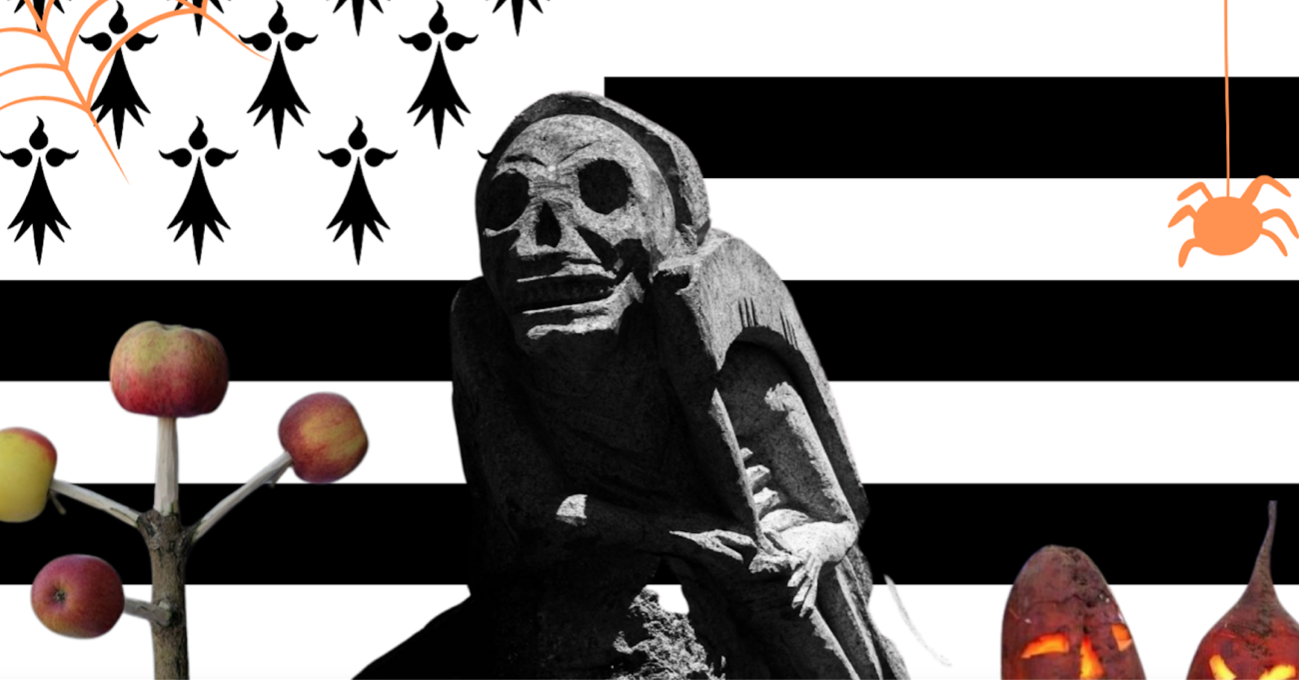Exploring the Celtic Traditions of Samhain: A Comprehensive GuideAs autumn's chill embraces the land, and the days grow shorter, an ancient Celtic celebration comes to life. Samhain, pronounced "SAH-win," is a holiday deeply rooted in Celtic tradition, marking the transition from the warm embrace of summer to the quiet introspection of winter. With a history that spans thousands of years, Samhain has left an indelible mark on modern-day Halloween festivities while retaining its sacred significance for many. In this comprehensive guide, we embark on a journey to unveil the mysteries of Samhain. We'll delve into the heart of Celtic traditions, exploring the rituals, customs, and beliefs that define this enigmatic holiday. Whether you're a curious seeker of knowledge or someone looking to connect with their Celtic heritage, join us as we unravel the tapestry of Samhain's past and present, shedding light on its profound cultural and spiritual significance. Prepare to step into a world where the boundary between the living and the spirit world thins, where bonfires blaze in the dark, and where the spirits of ancestors and deities are honored. Welcome to the mystical realm of Samhain, where ancient traditions meet modern understanding, and the magic of the Celtic heritage comes alive. Unveiling the Celtic Origins of SamhainTo truly appreciate Samhain and its connection to Halloween, we must first venture into the ancient Celtic traditions that laid its foundation. This ancient festival marked the changing of seasons, signifying the moment when "the summer goes to rest." It was more than just an agricultural event; it was a time for taking stock before the onset of winter, a season synonymous with darkness and decay in the Celtic worldview. During Samhain, the Celtic people believed that supernatural forces, the essence of darkness and decay, roamed freely, emanating from the ancient mounds and barrows scattered across the countryside. To appease the gods and ensure a regenerative agricultural cycle, enormous bonfires were kindled—a tradition that has persisted through the ages. This profound connection to agriculture is still evident today in many communities where masks and rituals are believed to influence the success of crops. For the Celts, this time of year carried immense symbolic weight, and it was said that Samhain witnessed the passing of many mythic kings and heroes. Samhain in Celtic Mythology In the intricate tapestry of Celtic mythology, the year was divided into two distinct seasons: the bright season and the dark season. Samhain emerged as a day of transition, bridging the gap between these two seasons. It signaled the onset of the dark season and marked the beginning of a new year, aligning closely with the conclusion of the harvest season. Among the Celts, Samhain held a sacred place alongside three other significant Celtic religious festivals:
One of Samhain's central themes was the belief that it allowed the spirits of the deceased to briefly reunite with the living. In Celtic society, this celebration carried immense importance and participation was virtually obligatory; those who were absent could face severe consequences, even death. During this unique period, all other activities ceased - wars, hostilities, and agricultural work. It was a time for conflict resolution, debt settlement, and paying one's dues to the community. The Rituals of Samhain Samhain wasn't just a single-day event; it encompassed a weeklong observance that spanned from October 29th to November 4th in our modern Gregorian calendar. This week unfolded with distinct rituals:
These age-old Celtic traditions form the intricate tapestry that laid the groundwork for Samhain, a celebration that not only influenced modern Halloween but continues to resonate with those who seek to honor their ancestral roots and connect with the mystique of this ancient holiday. How to Pronounce SamhainPronouncing "Samhain" correctly is a crucial step in honoring its deep Celtic heritage. This ancient word finds its origins in the Gaelic languages of Ireland and Scotland, where it's spelled as "Samhainn." The most authentic pronunciation, in keeping with its Gaelic roots, is "Sah-win" or "Sow-in." In the Gaelic languages, the "mh" combination is often pronounced as a "w" sound, giving us "Sow-in." Alternatively, some accents may lean towards "Sow-an," with a short "a" sound at the end. What's important is that both variations respect the linguistic origins of this sacred festival. Depending on the country, the spelling may differ, but it's indeed the same celebration:
The Welsh had their own version of Samhain, called Calan Gaeaf, in Cornwall it’s called Kalan Gwav, and across channel in Brittany it’s known as Kalan Goañv. It's worth noting that "Samhain" should not be pronounced as "Sam-hane" or "Sam-hayn." These variations do not align with the Celtic languages and the true essence of the word. Learning and using the correct pronunciation not only pays homage to the rich cultural heritage of Samhain but also allows for more meaningful discussions about its history and traditions within the context of the Celtic linguistic tapestry. By embracing the authentic pronunciation of "Samhain," we connect with the linguistic roots of this ancient celebration, deepening our understanding and appreciation of Celtic culture. As we delve further into the customs and rituals that define Samhain, you'll gain a profound insight into its enduring significance within the Celtic linguistic and cultural context. How Samhain Transformed into a Christian HolidayThe transformation of Samhain into a Christian holiday reveals a complex interplay of religious and cultural influences that shaped the evolution of this ancient celebration. In 835, Pope Gregory IV strategically designated November 1st as the day to commemorate all saints in Catholicism. It's widely believed that this decision was a deliberate maneuver to redirect the pagan rituals of Celtic peoples toward a shared faith within Christianity. In essence, All Saints' Day, also known as the Toussaint in French-speaking regions, was intended to supplant the ancient religious festival of Samhain, as part of the broader Christianization of Europe. Despite these efforts, the old ways of Samhain persisted, particularly in Ireland, where the festival held deep roots. In 998, there was another attempt to distance the population from Samhain's practices by creating a "Feast of the Departed" on November 2nd, the day after All Saints' Day. This new holiday aimed to replace the old traditions once and for all. However, the majority of the population continued to honor the spirits and ancestors on November 1st, demonstrating the enduring influence and significance of Samhain. The Christianization of Samhain demonstrates the adaptability of cultural traditions as they evolve over time. While the Christian church sought to incorporate pagan rituals into its own calendar, the essence of Samhain endured, entwining itself with the fabric of modern Halloween and preserving the ancient connection between the living and the dead. As we explore the legacy of Samhain in contemporary times, we'll uncover how this fusion of old and new traditions continues to shape our understanding of this mystical holiday. Samhain vs. Halloween: Bridging the Gap Between Ancient and Modern TraditionsExploring the differences between Samhain and Halloween reveals a fascinating evolution of traditions over time. While the two celebrations share the same time of year, their origins and customs vary significantly. Historically, the Samhain of the Middle Ages did not aim to replace a pagan celebration but rather coexisted alongside it. It preceded All Saints' Day, established by Pope Gregory IV, and was fully tolerated and embraced by the Christian world. Over the centuries, the "evening of all Saints’ day" gradually transformed into "All Hallow’s Eve," and eventually, "Hallowe’en." One key distinction is their place in the calendar. Samhain corresponds to the Gregorian New Year, emphasizing the transition to the dark season and the culmination of the harvest. Halloween, on the other hand, has evolved into a celebration of the deceased and does not mark the passage to the dark season or the end of harvest. In the 18th century, the legend of Jack-o’-lantern added a new layer of significance to this time of year. Jack, a rogue during his lifetime, was denied entry into both heaven and hell upon his death, condemning him to wander the Earth every October 31st, the anniversary of his demise. Traditionally, Jack-o’-lanterns featured terrifying faces carved into turnips or beets before pumpkins became the iconic choice. This legend, exported to the United States through Irish migrations, contributed to Halloween's transformation into a prominent fixture of American pop culture. It wasn't until the 20th century that Halloween fully embraced its modern identity, complete with the traditions of candy, costumes, and autumnal consumerism. In France, these customs only gained widespread popularity in the 1990s. While Samhain and Halloween are distinct in their historical origins and customs, they are both integral threads in the rich tapestry of traditions that connect the past to the present. As we delve deeper into the fascinating world of Halloween, we'll uncover how these ancient roots continue to shape the vibrant celebrations of today. A Samhain Tradition in Brittany?In the Celtic heartland of Brittany, France, the age-old traditions of Samhain persist, forging a profound connection between the living and the spirits of the departed in a way reminiscent of its Irish counterpart. Known as "Kala Goañv" in Breton language, this tradition hearkens back to the days when the "Calendes de l’hiver" marked the beginning of the Celtic year and the "months of darkness," or "mizioù du" in Breton. At the onset of November, the festival of "Gouel an Anaon," the Feast of Souls, took center stage—a day when the realms of the living and the deceased could intertwine. Kala-Goañv, often referred to as Winter Kalends or Gouel Heven (Summer’s End), is the Breton name for Halloween. It's a celebration deeply rooted in the folklore of Brittany, where customs and beliefs have thrived for generations. One of the most intriguing aspects of this tradition is "Boued an Anaon," the Food of the Hosts of the Dead. According to Breton belief, ancestral spirits known as the Anaon hunger for sustenance from the world of the living. To appease these spirits, food is set aside exclusively for their use and must remain untouched throughout the holiday. Consuming this food is considered sacrilege and is said to condemn one to become a hungry ghost in the afterlife, forever barred from partaking in communal feasts. In Brittany, an age-old custom involved children carving faces into beets and placing candles inside them during the Toussaint period. These lanterns were then left out at night on hillsides and along pathways. They symbolized the Ankou and the spirits from the Otherworld who manifest during this festive time. In the commune of Plougastel, another ancient custom endures—the "Gwezenn an Anaon," or the Tree of the Dead ceremony. This communal celebration brings together the town's residents with shared bread, songs dedicated to the departed, and an auction featuring a branch adorned with apples. Ankou: The Messenger of DeathAmong the numerous legends and traditions of Brittany, one figure stands out prominently—Ankou. This mythical being is considered an incarnation of Death itself or, more precisely, its messenger. Often depicted as a skeletal figure armed with a lance or a large arrow, Ankou's role is to carry the souls of the departed to the afterlife. Legend has it that hearing the creaking of Ankou's cart wheels serves as an omen, warning of an imminent death in the vicinity. Ankou's presence is not confined to the realms of myth and legend alone. In various parts of Brittany, you can find sculptures and depictions of Ankou on the walls of ancient ossuaries. These haunting representations serve as a stark reminder of the inseparable connection between life and death, a testament to the enduring impact of Ankou on Breton culture and the collective imagination. Today, Ankou continues to captivate minds as a character often featured in literature, art, and folklore. The legend of Ankou endures as a reminder of the inexorable passage of time and the mysteries that shroud the transition from this world to the next. In Brittany, the spectral figure of Ankou remains a symbol of both fear and fascination, a timeless embodiment of humanity's age-old fascination with mortality and the unknown. The Familiarity of Death in Brittany"Rien n’est plus particulier à la Bretagne que la préoccupation et la familiarité de la mort," ("Nothing is more distinctive to Brittany than the preoccupation and familiarity with death") wrote Gwenc’hlan Le Scouëzec in his Guide to Mysterious Brittany. Countless legends are associated with death, many of which were compiled by Anatole Le Braz in "La Légende de la Mort en Basse-Bretagne," published in 1893. Ronan Le Coadic, professor at l'Université Rennes 2, emphasizes how much has changed in the way the Bretons are born, live, and die over the course of the last century. The figure of Ankou, the presence of ossuaries, the significance of All Saints' Day in the Breton religious calendar, and the existence of region-specific rituals like the "proëlla" in Ouessant, all serve as testament to the enduring importance of the traditional cult of the dead in Breton culture, especially in Lower Brittany. However, the progressive secularization of Breton society in the wake of the Second World War dealt a significant blow to these death-related rituals, which were still practiced half a century ago. Embracing Celtic Halloween TraditionsAs we conclude our journey through the tapestry of Samhain, it becomes evident that this ancient Celtic celebration transcends time and borders. From its origins in the verdant landscapes of Ireland, Scotland, and Wales to its enduring presence in the heartland of Brittany, France, Samhain continues to weave its mystical threads into the fabric of our collective heritage. The traditions of Samhain resonate deeply with the human experience—a profound connection between the living and the spirits of the departed, a celebration of the harvest's bounty, and a reverence for the passage of time and the changing seasons. This enduring connection to our ancestors and the spirit world evokes a sense of wonder and introspection that remains as poignant today as it was thousands of years ago. In Brittany, the customs of Samhain have survived, blending seamlessly with the region's unique cultural identity. "Kala Goañv," the Breton expression for Samhain, illuminates the deep-rooted connection between the Celtic lands, highlighting the universality of these traditions. The tales of Ankou, the messenger of death, and the omnipresence of death-related rituals remind us of our mortality and the mysteries that lie beyond our earthly existence. These stories endure as a testament to the enduring fascination with the unknown and our quest to understand the transition from life to the afterlife. As modern Halloween celebrations sweep the globe, we find ourselves caught in the crossroads of tradition and innovation, old and new. Samhain, the Celtic Halloween, serves as a bridge between ancient wisdom and contemporary revelry. It reminds us that beneath the costumes and candy, there lies a deeper connection to our roots and a profound respect for the cycles of nature and life. So, as you embrace the festivities of Celtic Halloween, take a moment to reflect on the age-old customs that have journeyed through time to reach us today. In the crackling of bonfires, the carving of lanterns, and the whispers of ancestral spirits, the essence of Samhain endures, inviting us to honor the past, celebrate the present, and welcome the mysteries of the future
1 Comment
Pilgrim Michael
10/9/2023 04:06:49 am
Samhain is so important to me as I work Spiritually with my ancestors throughout the year. Thank you for your article.
Reply
Your comment will be posted after it is approved.
Leave a Reply. |
Categories
All
Blog Archives
June 2024
Breizh Amerikais an organization established to create, facilitate, promote, and sponsor wide-ranging innovative and collaborative cultural and economic projects that strengthen and foster relations and cooperation between the United States of America and the region of Brittany, France. |
Copyright 2014 - All rights reserved - Breizh Amerika - Privacy Policy



 RSS Feed
RSS Feed

